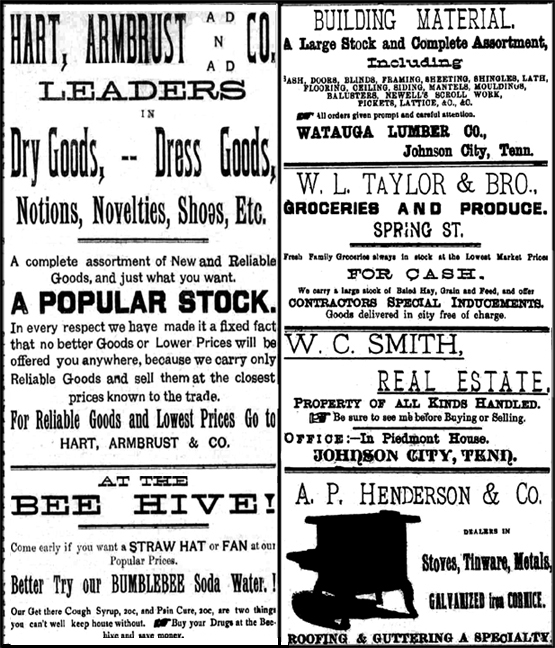In mid-summer of 1891, Johnson City received a new much-needed water works system, which was long overdue that covered all parts of the growing city. For their faithful and untiring efforts in the construction of the new plant, the Watauga Water Company deserved the highest compliment.
Although time was limited and the city was hindered by injunctions and other obstacles, they fabricated the reservoir and put in an entire system of piping within less than two months. This was a significant undertaking that included more than four miles of main piping that extended from the mountains to the furnace and distributed to 13 miles of branch piping.
Although the targeted time established for the completion of the new venture was July 1, 1891, water began flowing into the distribution pipes on June 27, five days early. This beat the record on any other enterprise that has been undertaken in Johnson City. The Watauga Water Company, instead of asking for an extension, impressively fought obstacles and pushed the work to completion even before the appointed time.
There was hardly a person in the city who thought they could accomplish the undertaking so quickly. In fact, there were some individuals who, before the work began, were disposed to believe that the chosen company was not large enough for the task. But despite the beliefs of such individuals, the clear freestone springs of Buffalo Mountain took their rise in the midst of all the city's activity and the city continued to advance toward certain splendors of its future.
With the opening of the city water system came the great steel plant, the Carnegie Hotel, the completion of the Electric Light Plant, the Carnegie Iron Furnace, the JC&C Railroad, the Electric Street Railway and many other accomplishments significant to the city's expectations.

Numerous Newspaper Ads from 1891
On the day of water flow, a newspaper reporter along with representatives of the Watauga Water Company and several gentlemen of the city, including members of the Board of Aldermen, traveled over a portion of the grounds for the purpose of inspecting the new hydrants.
Four carriages were dispatched to escort the party to the highest points traversed by the system. The hydrants were opened and, in every case, a large volume of water was forced out in a most satisfactory manner. One individual, a Mr. Boardman, tried to secure hose with which to make further tests, but was unable to get it so quickly.
There was, however, every indication from the pressure displayed through the hydrants that by means of hose, the water could be carried with great efficiency to the top of the highest buildings in the city, thus insuring protection against a fire that no chemical engine could provide.
All members of the party expressed themselves as being perfectly satisfied with the operations as they had observed them. The water came out in a great stream and with such force that it tore the ground up where it struck. There could be no doubt that Johnson City had as good a system of waterworks as could be found in the South, one that would address all its purposes for years to come.
The city's water works was not a trivial thing for a growing city; this fact was proven by all the recent buildings that had been constructed. Johnson City's old frame buildings slowly gave way to substantial brick structures. The pioneer garb of the city had been tossed aside. As purely as time passed, the city advance. Four years wrought significant wonders in the beautiful valley and it is still beautiful.
The Watauga Water Company proved itself worthy and received the confidence of the citizens. The eyes of the blind had been opened, and the incredulous mortals of Johnson City, many of whom had dreamed for years beneath the shadows of the great ore belt, were now awaked to the reality of what was going on around them.
The city was entering the march of progress and would be on top down the road when it reached a population of 25,000.

Comments are closed.